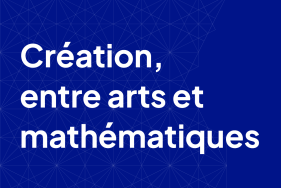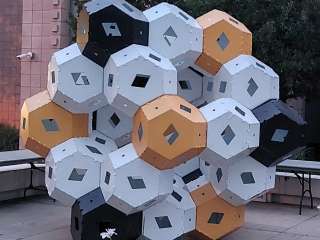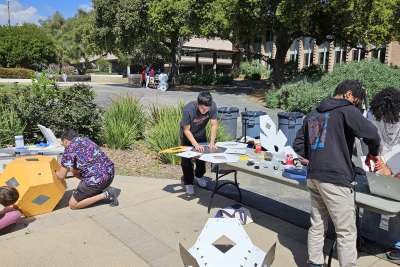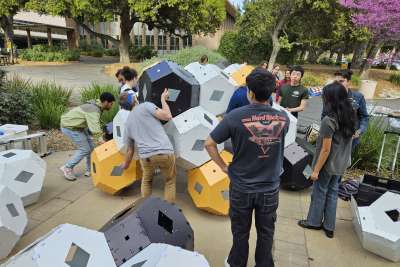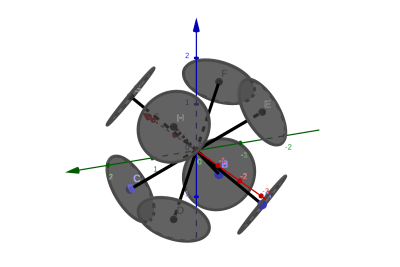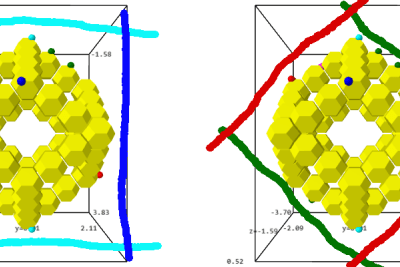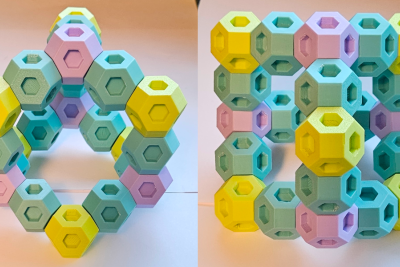Context
The Maison Poincaré is a museum dedicated entirely to mathematics, which opened its doors at the Institut Henri Poincaré on September 30, 2023. Each year, the museum offers two thematic temporary exhibitions, accompanied by guided tours, workshops, events and cultural activities around these topics.
As a continuation of the research program Illustration as a Mathematical Research Technique, to be held from January 5 to April 3, 2026 at IHP, the Maison Poincaré is proposing a group exhibition designed to offer museum visitors visibility to creations, works, prototypes and projects originating from the reflections of scientific participants, which may have started at this scientific meeting or, upstream, during encounters between scientists or with artists.
This exhibition will run from April 9 to July 25, 2026.
Call for proposals
A call for projects was open from 8 April to 15 July 2025, to everyone, including artists, mathematicians, and scientists from all countries wishing to contribute to this exhibition, whether or not they participate directly in the Illustration as a Mathematical Research Technique programme. All formats (painting, sculpture, digital art, etc.) were accepted.
The selection committee is composed of:
- Jérémie Bouttier, directeur de l'Institut Henri Poincaré (IHP)
- Élodie Christophe, responsable du département Maison Poincaré de l'IHP
- Rémi Coulon, président du Comité de Culture Mathématiques de l'IHP
- Marie-Laure Desjardins, critique d’art et directrice de la rédaction d’ArtsHebdoMédias
- Edmund Harriss (University of Arkansas), commissaire scientifique et muséographe de l'exposition
- Justine Jean, chargée de mission arts sciences à la direction des relations science culture société de Sorbonne Université
- Théo Lelieur, Fond de dotation de l'Institut Henri Poincaré
- Martin Skrodzki (Technische Universiteit Delft)
- Florence Wagner, directrice de la Galerie Wagner
- Glen Whitney (Studio infinity), commissaire scientifique et scénographe de l'exposition
The selection committee selected 15 projects from the many projects received, here is the list:
#055 - Alatorre, Darío : "Laboratorio de Nudos y Afectos"
#077 - Gallais, Pierre : "D'un espace... l'autre"
#111 - Pic, Sylvie : "Flächen"
#118 - Caland, Natacha : "Bleue comme une orange"
#120 - Jean, Frédéric : "Les Reflets d’une Courbe Elliptique"
#190 - Robillard, Gaëtan : "En recherchant la vague"
#206 - Taalman, Laura : "Granny Life: Traditional crochet motifs determined by totalistic cellular automata"
#212 - Bardula : "Triarchie Matricielle"
#223 - Berger, Pierre : "Sculptures Metalliques De Configurations"
#224 - Minarčík, Jiří : "The Shape of Turbulence"
#247 - Lacoste, Ulysse : "La surface de l'Envol"
#255 - Harriss, Edmund : "Misshapen chaos (of well-seeming forms)"
#301 - Gaudel, François : "Cube arabo-gréco-latin et géométries finies"
#405 - Silva, Claudia : "Filtration / 454"
#407 - Hocking, Nancy : "From Diagram to Disorder"
Mathematical Art in Creation
Art and mathematics, at their core, strive to bring ideas from the realm of thought and concept into our world, although in perhaps seemingly different ways. In both cases, this transformation does not simply happen of its own accord. The final product, whether artwork or theorem, often conceals the immense work that went into producing it: Creation is not an instant, it is a process.
In this show, we wish to explore this process when the artistic goal is to communicate or embody mathematical ideas. This perspective aims to reveal not just the general relationship and affinity between mathematical and artistic practice, but also the differences in artistic and traditional mathematical approaches to communicating a particular concept or topic.
